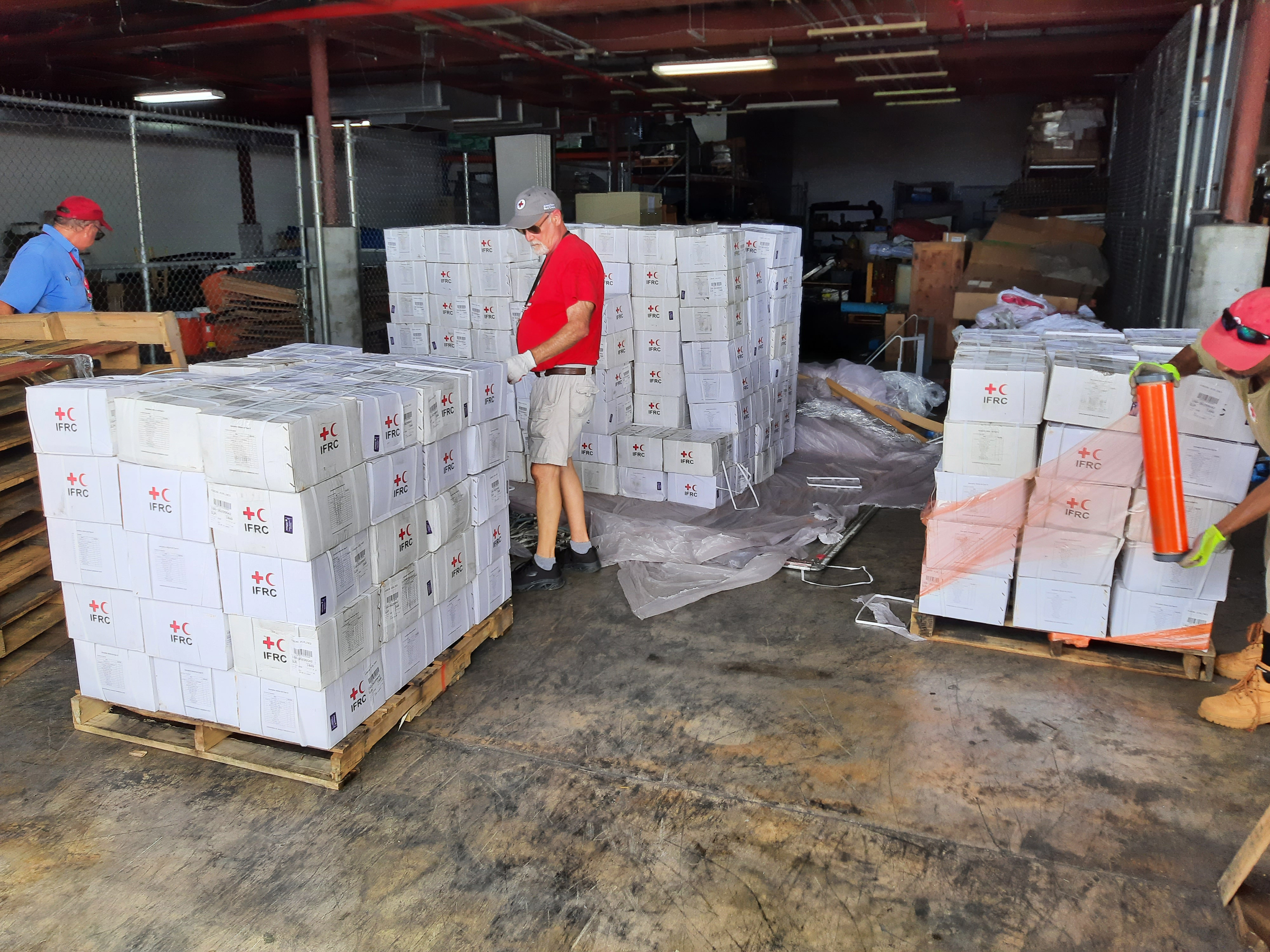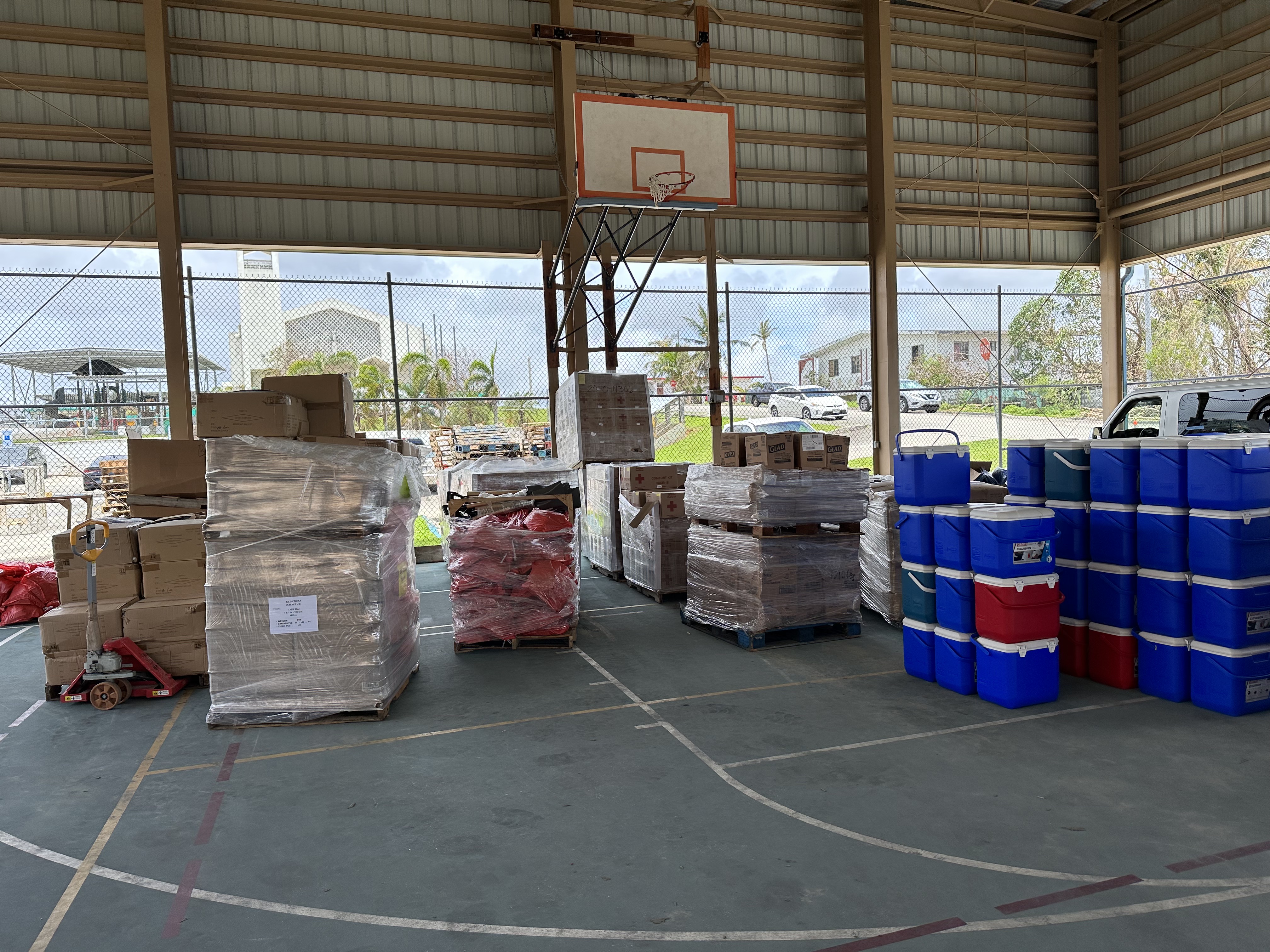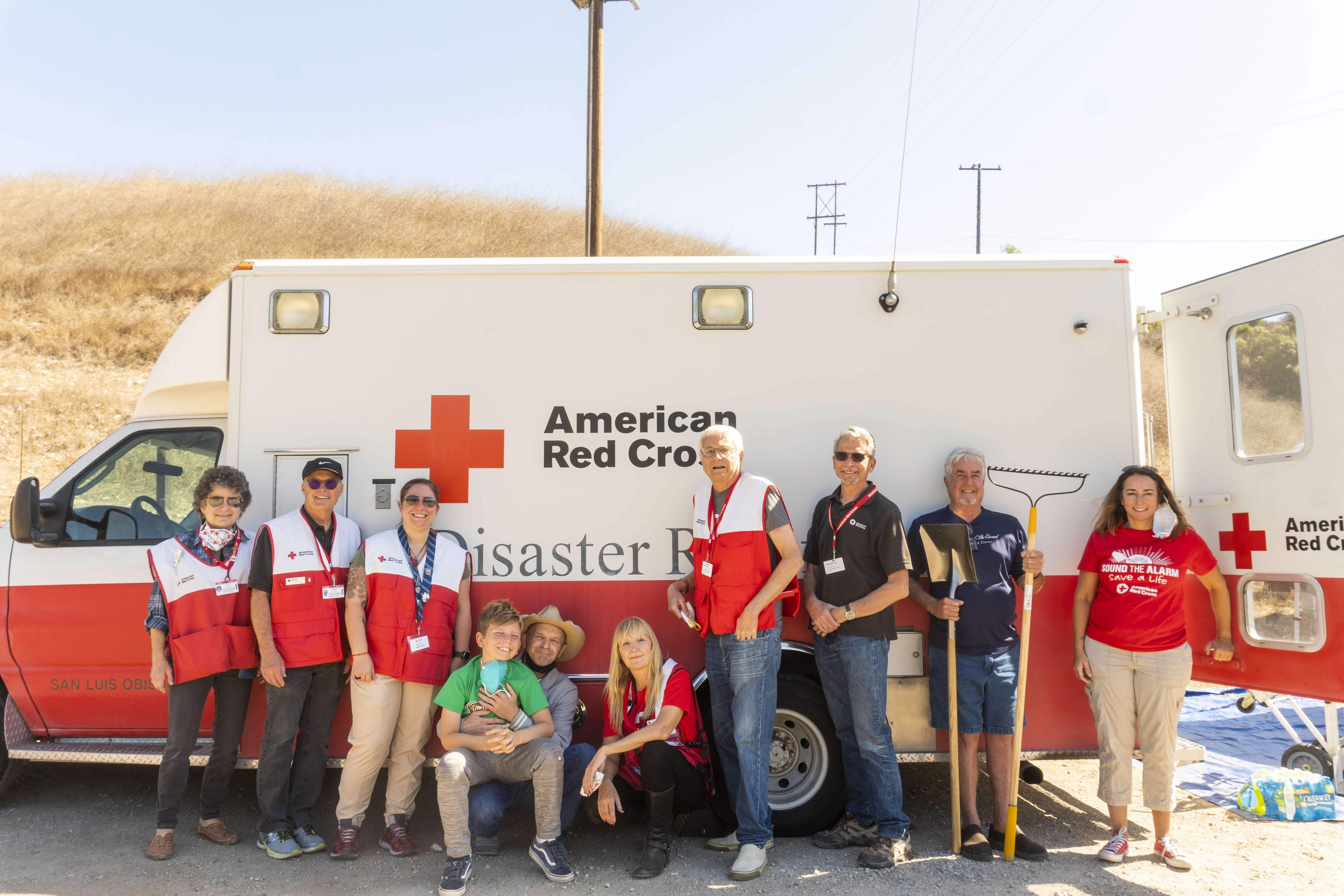Many Red Crossers find gratification in deploying to disasters across the country and beyond. “But it’s just as valid to stay behind,” said Erick McCurdy, a longtime volunteer from Santa Barbara. “When everyone deploys, someone needs to stay behind and keep the lights on.”
As a local disaster manager in his hometown, McCurdy is well-qualified to make that statement. A veteran of catastrophes like the Thomas Fire in 2017 and a witness to the deadly mudslides in Montecito the following year, he knows how important it is to be prepared on the home front, even in an idyllic community such as his.
McCurdy was first introduced to the Red Cross decades ago. He was inspired to take a CPR and First-Aid course after his young son choked on a piece of hotdog. He then became a CPR instructor. After taking the Mass Care sheltering training courses, he did actually deploy to a hurricane on Alabama’s Gulf Coast.
“I didn’t mind deploying,” he said of the experience, “but I didn’t know if I’d ever do it again.”
That was until he heard that Typhoon Mawar was heading straight towards Guam. McCurdy has a family connection to the island. It’s where his daughter-in-law was born and raised. Her parents immigrated to the island from Korea and her father taught martial arts to the U.S. military personnel stationed there.
So just two days after the powerful storm had made landfall on the small island, McCurdy was with the contingent of volunteers staging in Los Angeles, waiting for a flight across the Pacific. “I had waited most of the day when I was approached and asked if I could be ready to go in 15 minutes. They needed someone to accompany a load of Red Cross electronics that would be heading directly to Guam from San Francisco.” After a quick hop to SFO, McCurdy boarded a special United Airlines humanitarian flight that was full of supplies and tradespeople heading out to repair and rebuild the battered island’s infrastructure.

Volunteer Erick McCurdy checks out the cockpit of the United Airlines plane that carried supplies and tradespeople to help repair and rebuild Guam just days after powerful Typhoon Mawar battered the island.
Elaine (left) is fluent in four languages – English, Chamorro, Chuukese and Carolinian. Even as a shelter client herself, she was instrumental in helping to translate the shelter intake forms for others.




Volunteers from the local community assisted Red Cross volunteers in unloading essential supplies like hygiene kits, kitchen sets, jerry cans and mosquito nets at this makeshift warehouse
As soon as McCurdy had boots on the ground, he was assigned to a warehouse along with about 25 other volunteers. They were receiving truckloads of supplies like tarps, trash bags, gloves, flashlights, and cleaning supplies, and then assembling them into kits for the local residents.
“One day we had about 60 people from the neighborhood helping put these kits together. It was wonderful. They were very instrumental in helping us set up.”
McCurdy noticed that although the local people were stepping up to help, they never spoke of how they were personally impacted by the storm unless they were asked directly. “People were out helping their neighbors who had lost everything because they had only lost half of what they had. Like their house was “only” heavily damaged but their neighbor’s was completely destroyed, so they felt obligated to help.”
When the shelters were up and running, the local islanders continued to help one another. McCurdy recalls that, “one woman was multi-lingual, she spoke four languages, and was very instrumental in helping with translating the shelter intake forms.”
He also made sure to mention his connection to the island and dropped his daughter-in-law’s story every chance he got. “It was just a casual comment but very strategic,” he said. “It really helped to cement a relationship with the people that I met.”
There are no cities on Guam, according to McCurdy, just villages. The modest homes are constructed from concrete and have steel storm shutters. One shelter client said that during the storm she had rain coming into her living room. A storm shutter had been blown off a sliding glass door and she showed him the video. “The rain was coming through horizontal and hitting the wall on the opposite side of the room,” he said. “I can only imagine how terrified she was.”
Back home now, McCurdy doesn’t know when, or even if, he will travel long-distance again to a major disaster. To him though, it doesn’t matter. He knows firsthand the feelings of satisfaction and fulfillment in providing comfort and care to families affected by disasters – whether it’s across the ocean or in his own back yard.


Erick McCurdy and fellow volunteers from Santa Barbara County deliver emergency supplies to their neighbors affected by the Alisal Fire last year.
Red Cross volunteers are trained to respond to emergencies in their own neighborhoods and to major disasters in communities across the county. They provide food, shelter, comfort and care for those affected by these calamities. You can find out about the need for volunteers in your area by searching for current volunteer opportunities here.
Story by Dave Wagner, Public Affairs Volunteer
Lead photo by Frank San Nicolas, Guam Daily Post

